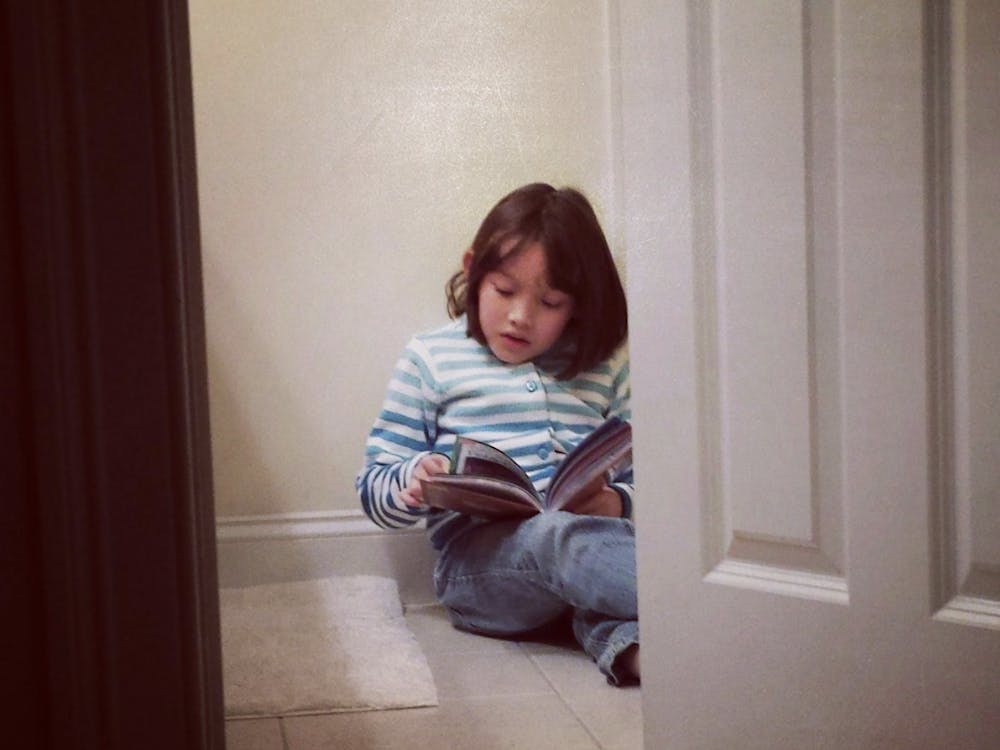
If you go online and browse through any one of the numerous literary journals in existence, you’ll unearth a vast collection of poems written by contemporary writers, generally normal people who can do extraordinary things with writing. I’ve read so many beautiful poems through these literary journals, but the one that has stuck with me most strongly is “Teratoma” by Alison D. Moncrief Bromage.
Upon first reading this poem, readers who are not quite familiar with the quick and quirky turns in imagery and language, which to me define contemporary poetry, might be confused at the overall meaning of Bromage’s poem. Nonetheless, the most enjoyable part of reading her poem is noticing all of the carefully chosen details and images that Bromage uses to develop her poem’s message.
The title “Teratoma” reveals that this poem is about cancer. Bromage begins her poem with a definition of the word, after all. It comes from terato, which is Greek for monster. However, the language throughout the rest of the poem suggests that the speaker’s experience with cancer runs deeper than just a passing encounter. And after a while, readers realize that the speaker narrating the poem is the cancer through the line “My name, Teratoma, monster am I.”
The poet’s choice to narrate from the perspective of the tumor gives readers an oddly sympathetic gaze into cancer’s mindset. One idea echoing throughout the poem is that teratoma considers itself to be the patient’s “sisterself.” From a removed, biological perspective, this kind of makes sense because a tumor arises from a person’s own cells in active mutiny against their body.
I find it really interesting that Bromage chooses to avoid telling a story from the traditional anti-cancer perspective. By having the tumor narrate, the poem attains an almost apologetic tone, as if the tumor itself knows how it will inevitably end up consuming the patient’s life — the object which gave it life in the first place.
People typically think of cancer as something evil that must be vanquished, an enemy that has a motive for taking over a patient’s body. Bromage, however, focuses her poem on teratoma questioning its own identity, confessing to the patient that “I came unto you / as a scapegrace... simple as chance. A ball of bedlam / in the side of an innocent babe.”
This suggests that teratoma feels conflicted about being the villain and that cancer cannot truly be blamed directly for its appearance. However devastating and unwelcome as it is, it arises from accidents in cell division.
The way that Bromage incorporates biology seamlessly into a very emotional poem about accepting a cancer diagnosis is unsettlingly lovely. One of my favorite instances of this happens when she writes “what happens first in the divide of cells / becomes what is and what shall be. I / sistercell was interrupted was / an amniotic half-life plucked.”
When I reread this poem, I’m always drawn to Bromage’s powerful choice of words that paint compelling images of the relationship between teratoma and the cancer patient.
For example, the speaker refers to cancer as “a cobble of lawlessness” that “come[s] tapping” quietly and suddenly, without fanfare. She describes a tumor’s onset as “silent as if inside a wooden horse,” alluding to the Greek myth of the Trojan Horse that allowed the Greeks to enter the city of Troy.
Finally, when she writes “Packed so close sistertwin / how could I not chaosfuss / touch cinch,” she once again encapsulates the inevitability of cancer’s growth once the tumor begins growing and how conflicted teratoma feels about growing inside its “sistertwin.”
These are just a few of my favorite phrases; If I was able to talk about all the images I loved in this poem, this article would be way past the word limit.
Obviously, since creative writing classes tend to focus on traditional poetry written in regular metered verses with end rhymes, it might be hard at first to understand or appreciate the intricacies of contemporary free verse poetry.
After all, I feel that without the scaffolding and support provided by a regular meter and rhythm, the reader’s entire focus becomes much more directed towards the images, descriptions and connections the poet develops.
I believe that you don’t have to love poetry to appreciate how expertly crafted each poem is, and I really hope that you all take a look at random poems from literary journals online and see what gems you can find.





